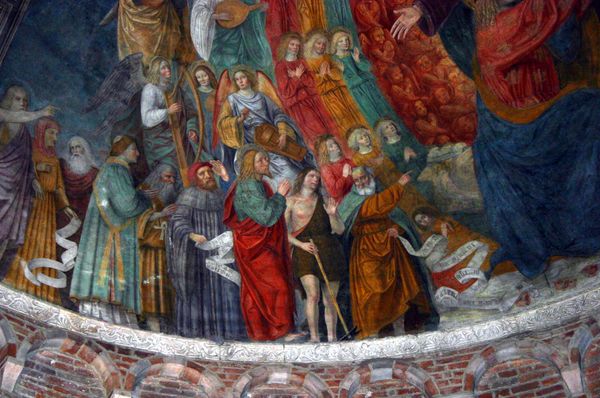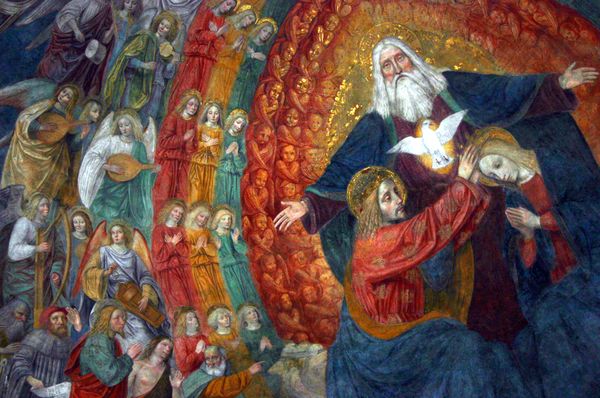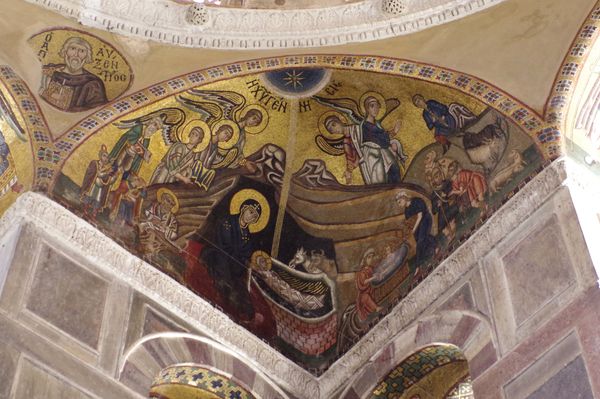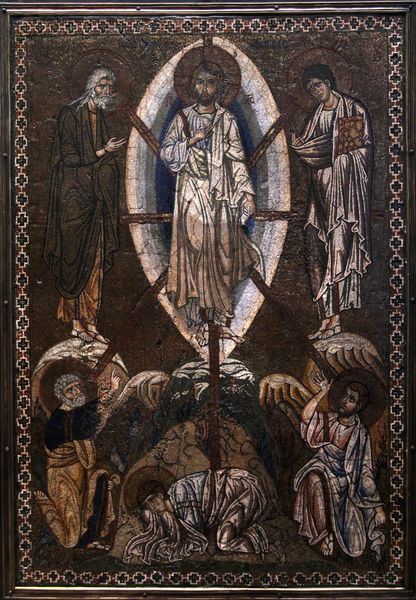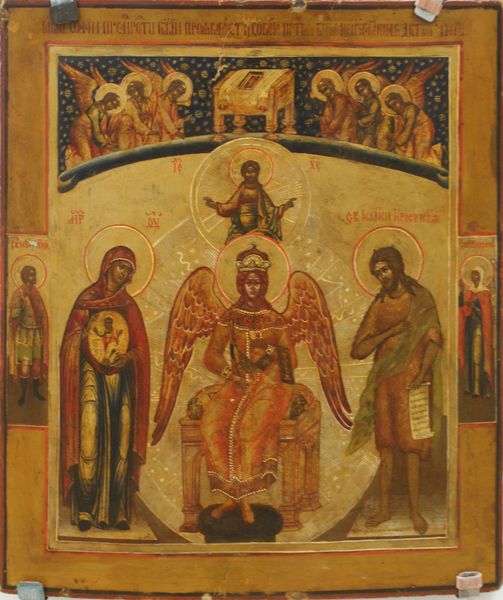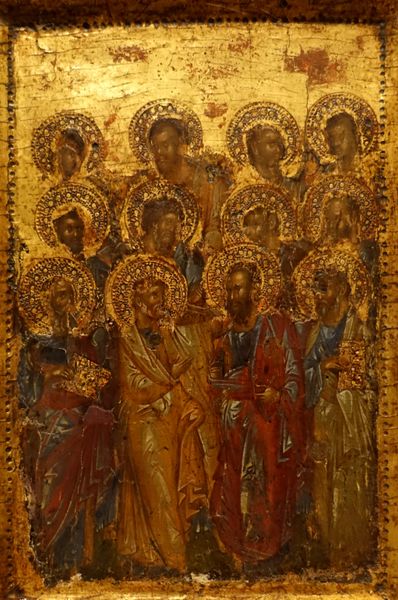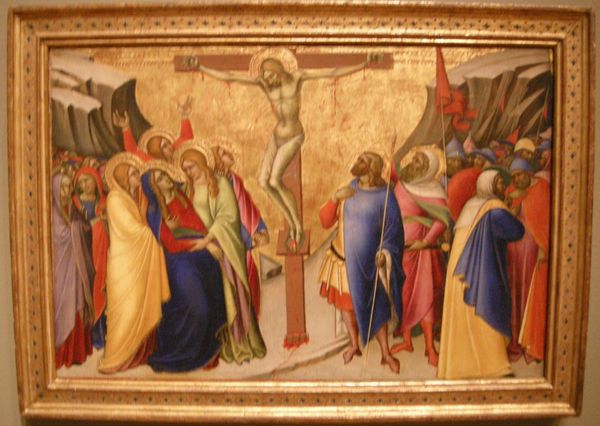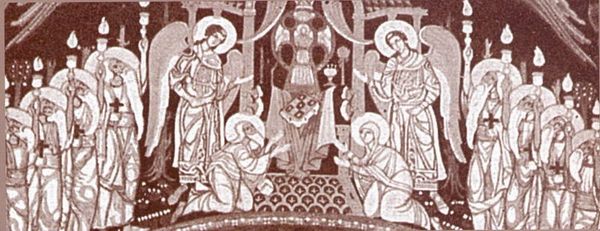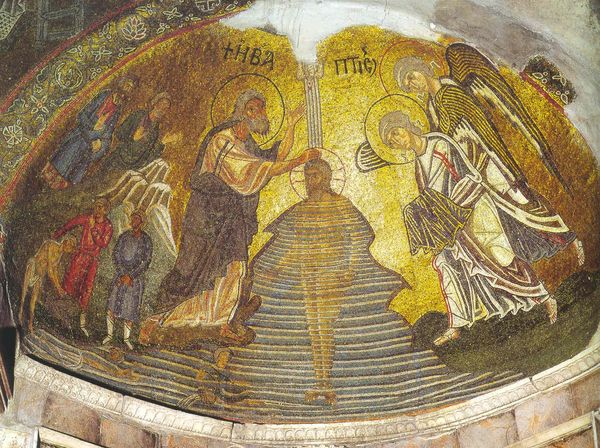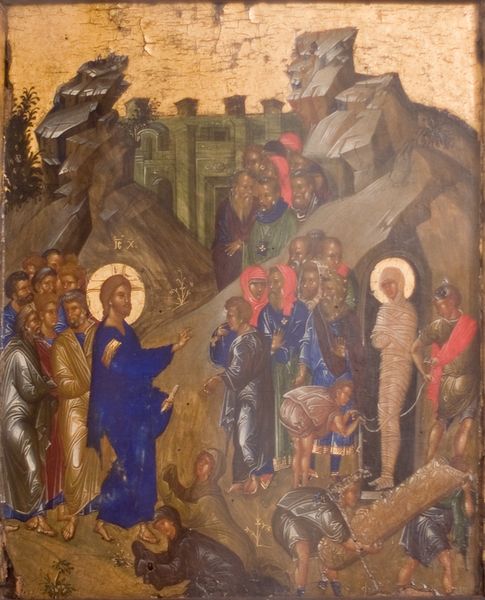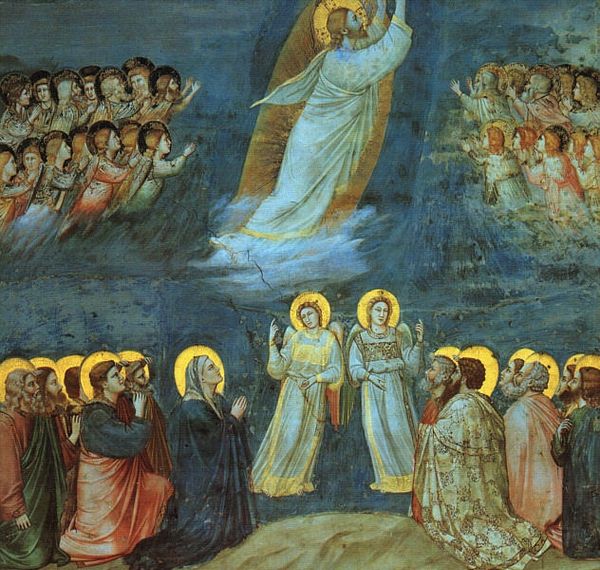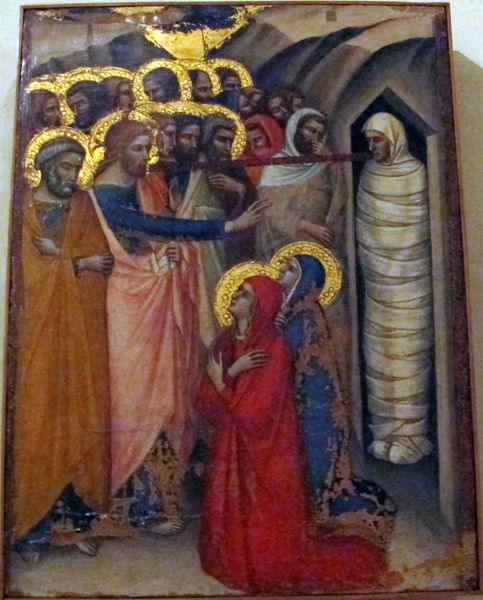
painting, fresco
#
narrative-art
#
painting
#
painting
#
figuration
#
fresco
#
oil painting
#
history-painting
#
italian-renaissance
Copyright: Public domain
Curator: This is a detail from Ambrogio Bergognone’s fresco "Coronation of Mary", dating back to around 1515. Editor: It’s overwhelming, yet somehow serene. All those angels, their delicate features...it feels like a choir of ethereal figures is descending right upon you. Curator: Indeed. Bergognone painted this as part of a larger decorative scheme. The sheer scale and the placement high up in a church ceiling contributes to that sense of awe you're describing. It was meant to inspire devotion and convey the grandeur of the divine. The iconography here is pretty traditional, situating Mary within a heavenly hierarchy. We must ask about the public role of this painting within its period. Editor: Considering its socio-cultural context, this imagery normalizes a certain power dynamic. While ostensibly celebrating Mary, the piece visually reinforces the patriarchal structures that were so entrenched in Renaissance society. Look at the subtle cues in gaze, posture, and color palette. Curator: Good point. Bergognone's patronage obviously influenced its style. Consider also the Renaissance's intense focus on visual rhetoric, using idealized beauty to express ideas about order. I think about how access and control worked at the time. How imagery became an instrument. Editor: The artist definitely makes choices reflecting what that powerful person wanted! Thinking about intersectionality, how did women and marginalized folks perceive their own power and spirituality confronted with artworks like this? Or do you feel art from that time was mostly built on controlling or reshaping feminine strength to the interests of ruling systems and ideologies? Curator: Well, Renaissance imagery is complex. Even in devotional settings, Mary represented an ideal of female virtue but also, potentially, of agency within accepted social constraints. Editor: Definitely! But looking critically at art is a powerful tool to deconstruct what is usually presented to us as objective knowledge. It opens pathways towards the recovery of disenfranchised voices, making visible that art can work to normalize political oppression as well. Curator: A good observation. Art has often mirrored and, sometimes, challenged power structures. The artist uses the fresco medium here as it provided relative longevity as it bonded tightly with its church setting’s architecture itself; as a method this reflects the permanence the social structures it shows seek to achieve. The politics of its placement and material give the piece enduring significance. Editor: Examining it critically, we not only deepen our comprehension of historical contexts but gain new insights to consider the present too! Curator: Precisely. Appreciating its artistry means appreciating its broader social and visual presence.
Comments
No comments
Be the first to comment and join the conversation on the ultimate creative platform.
